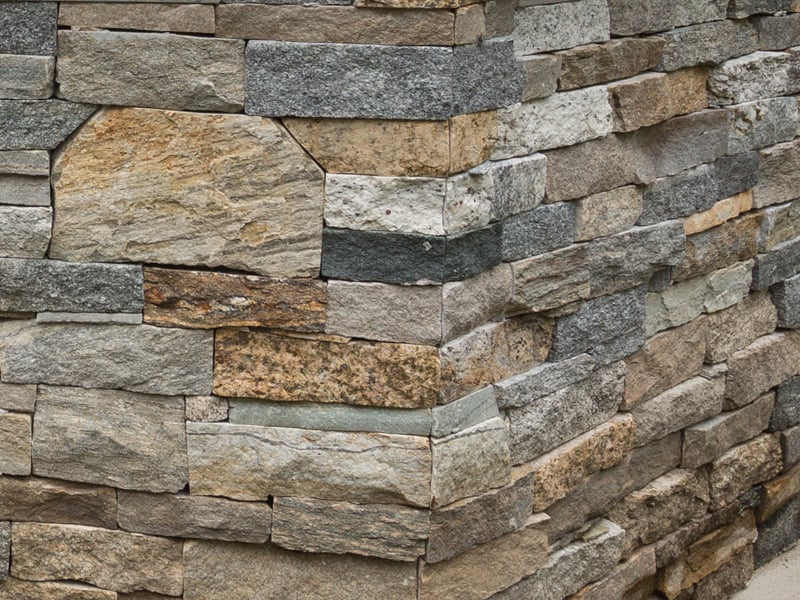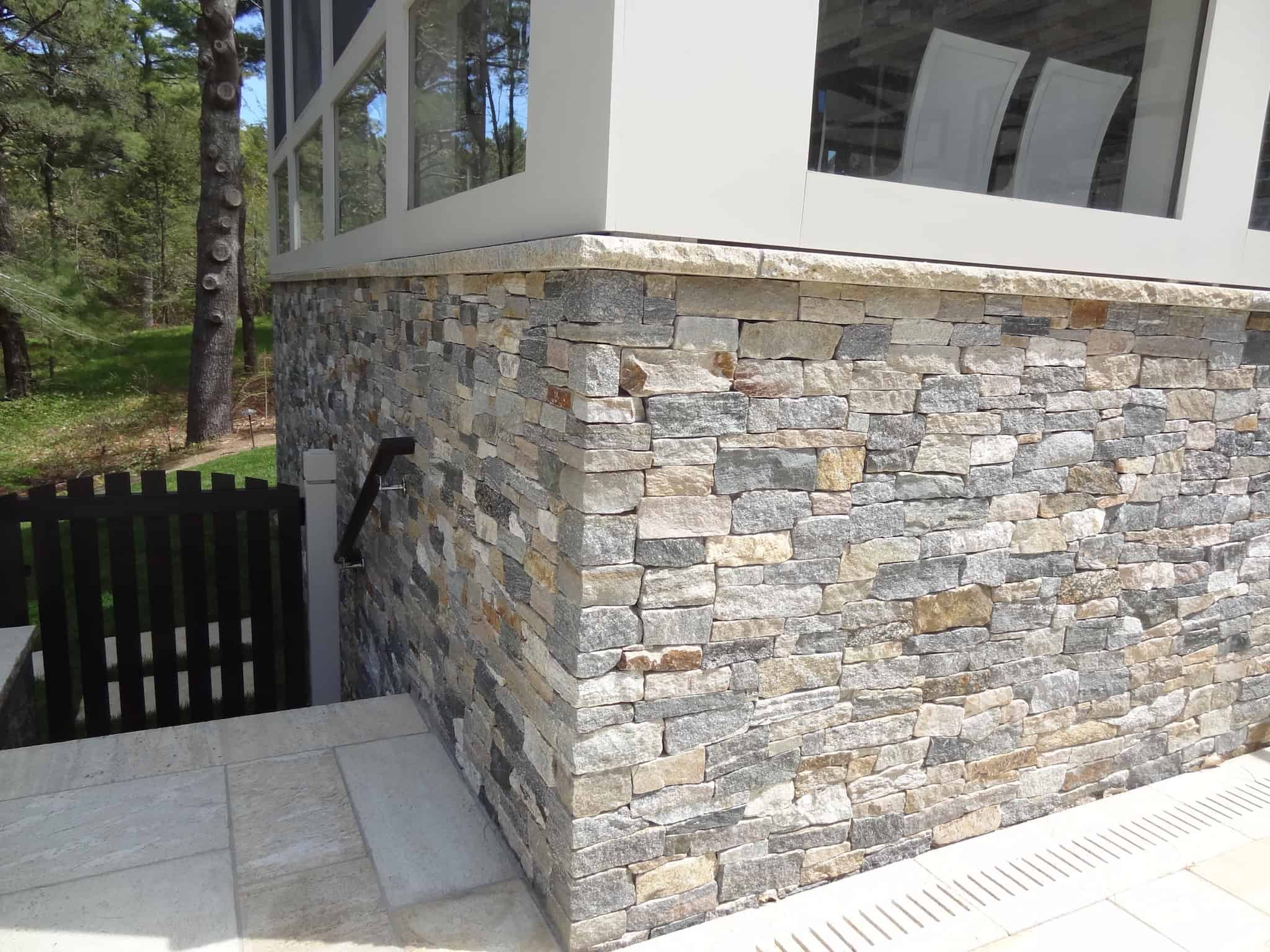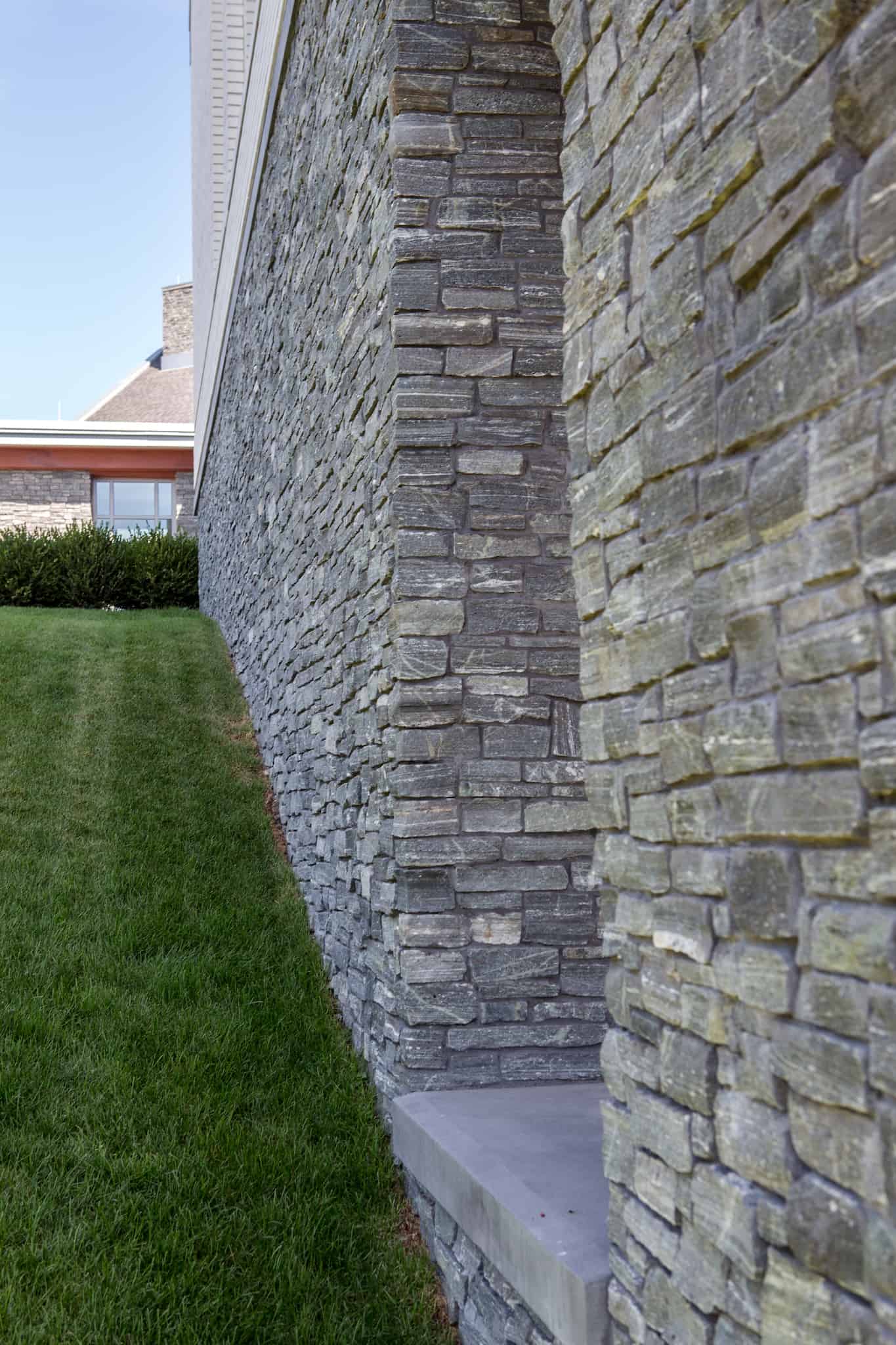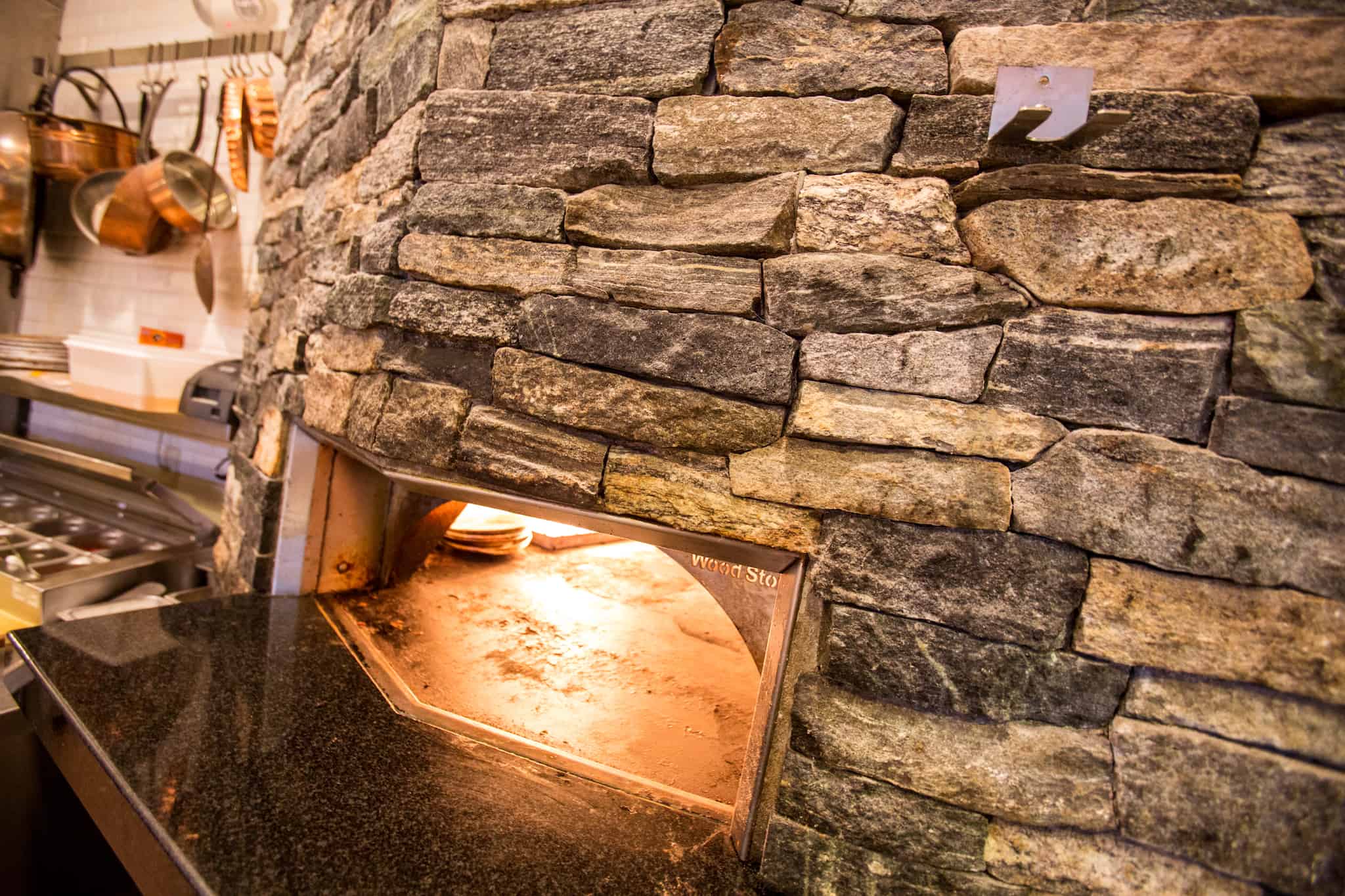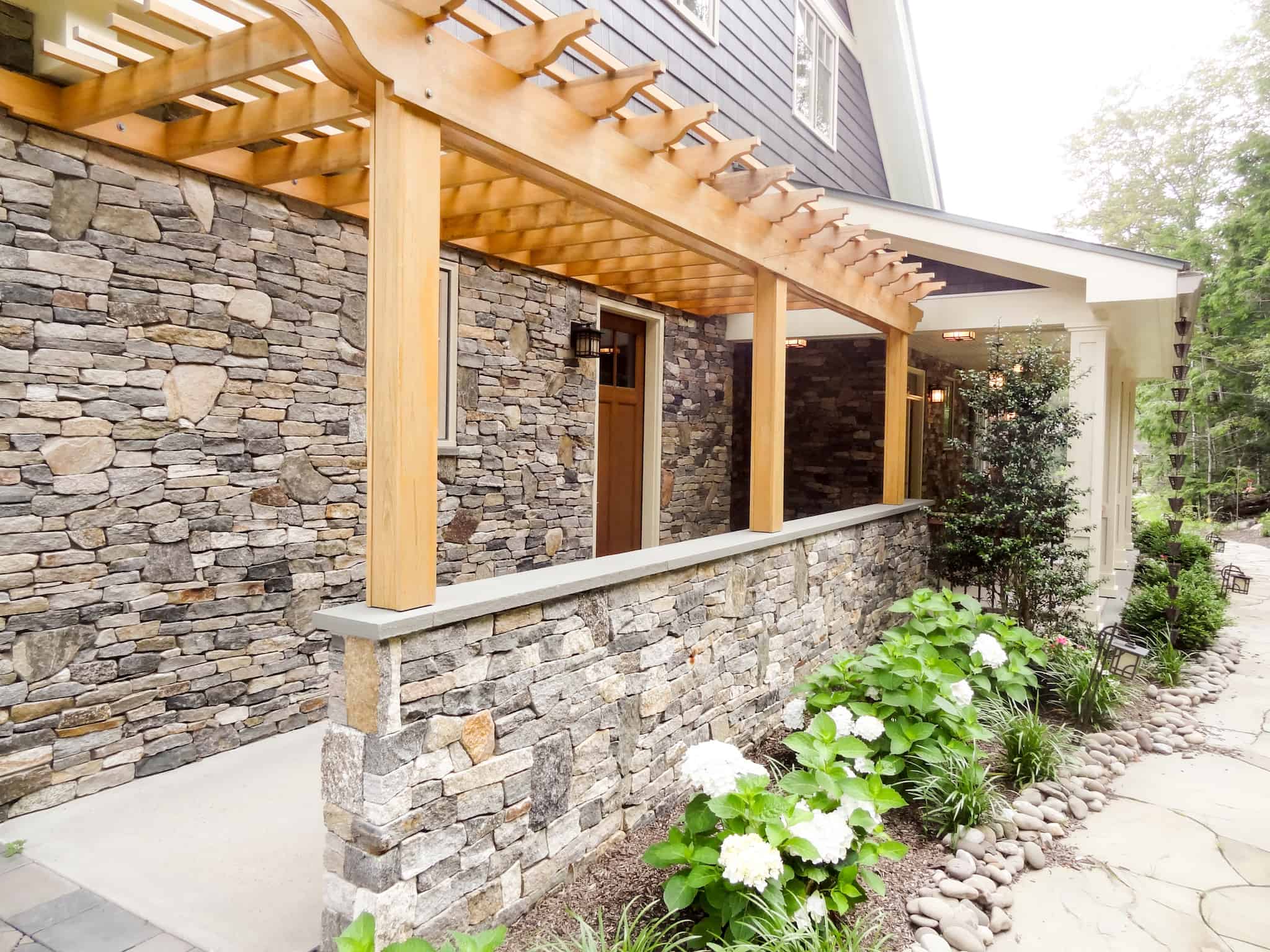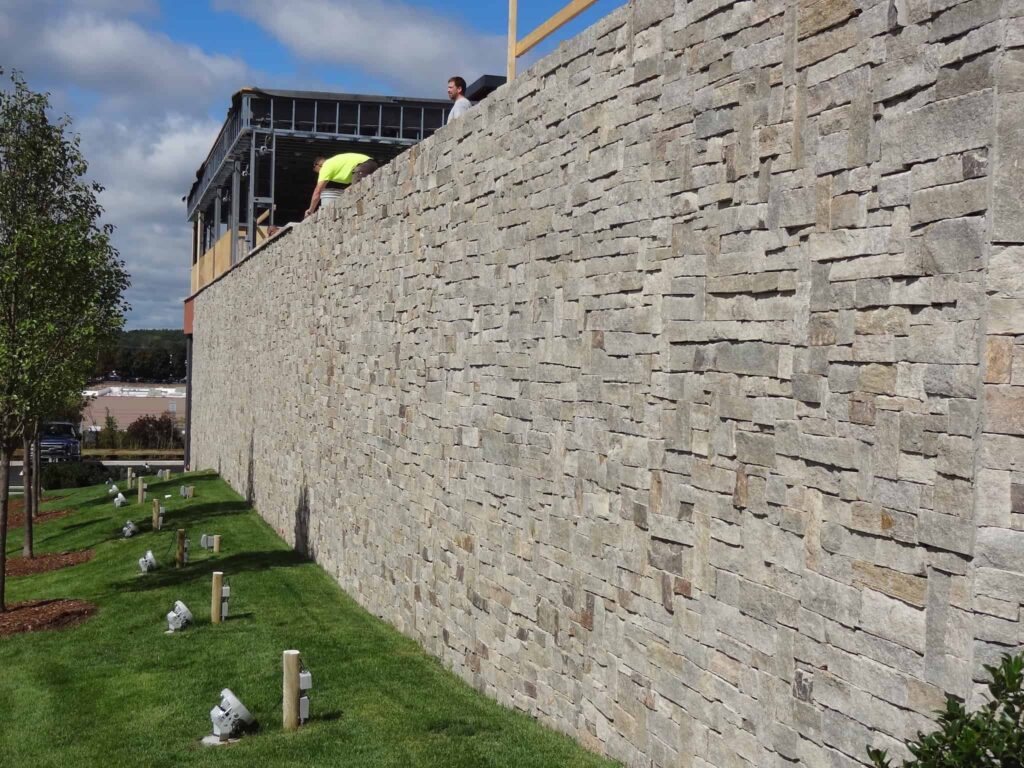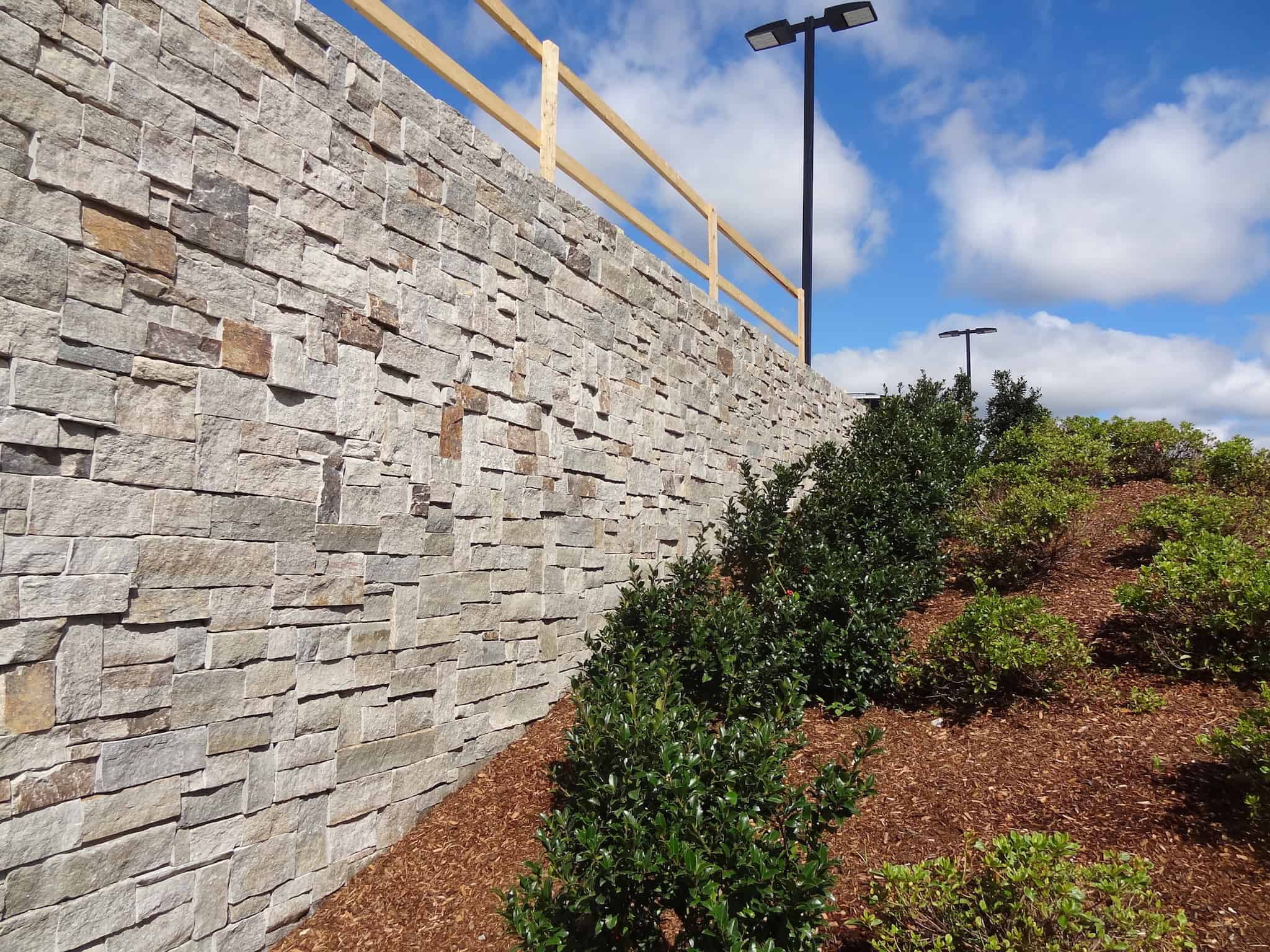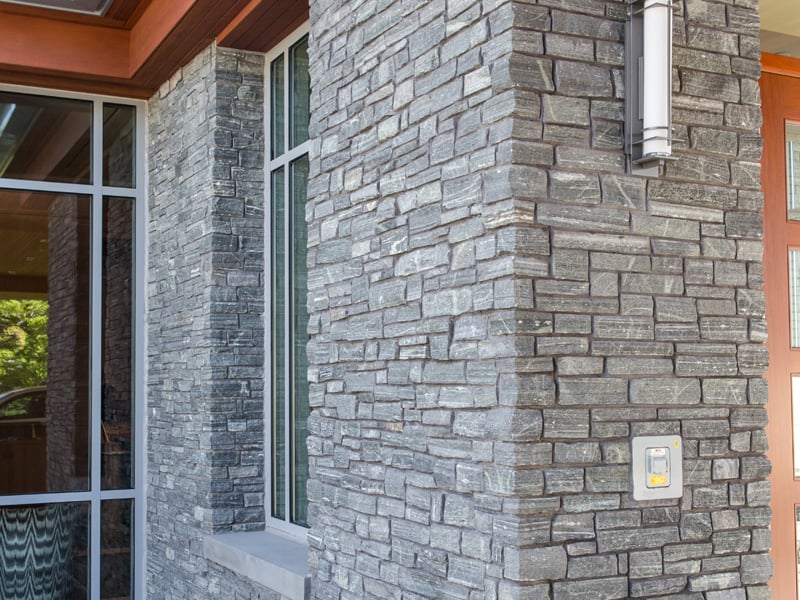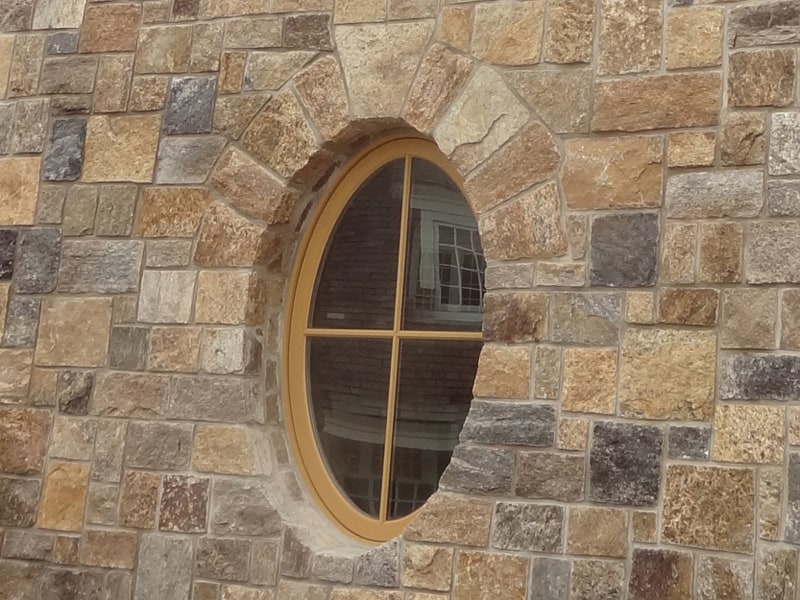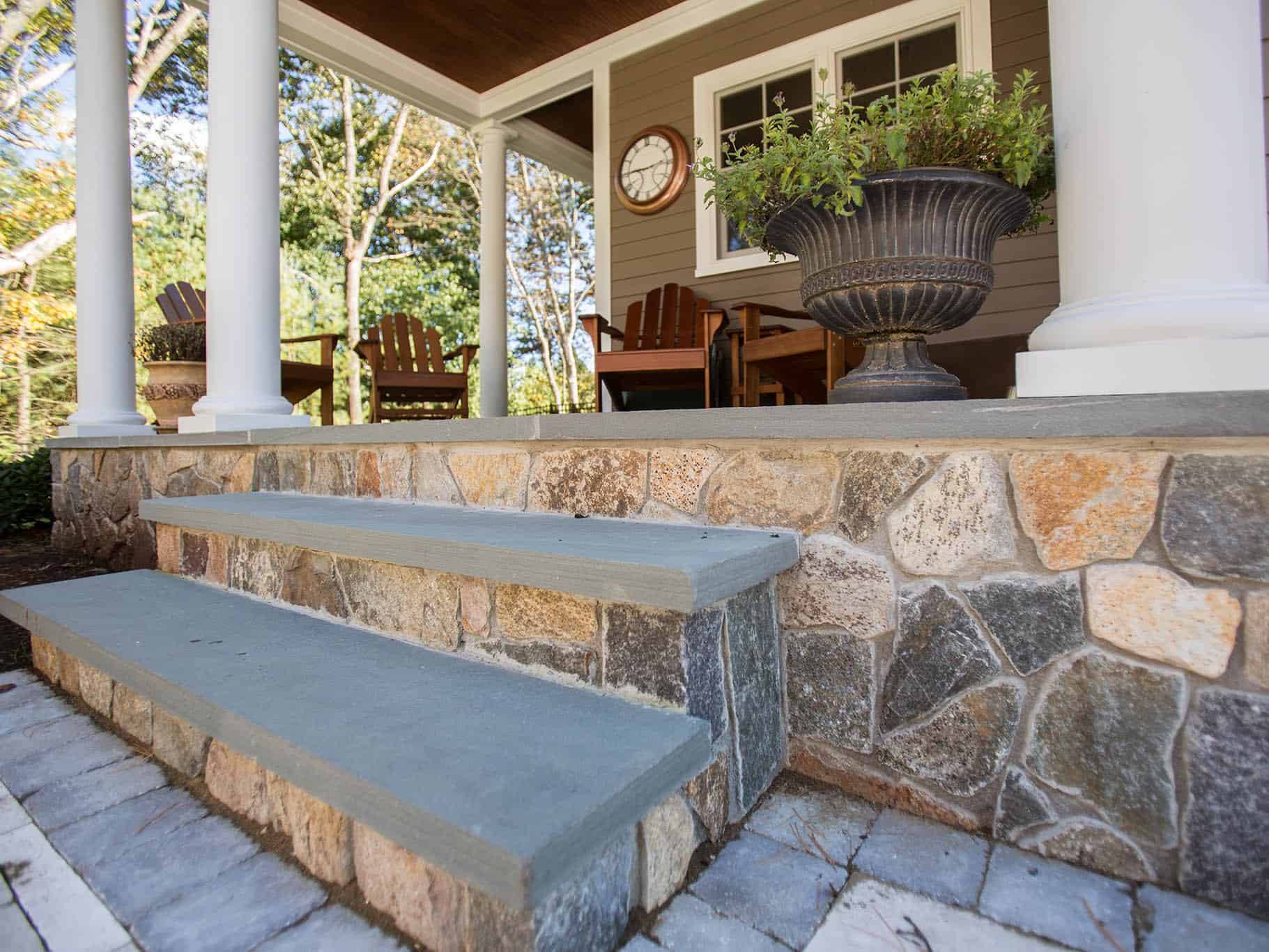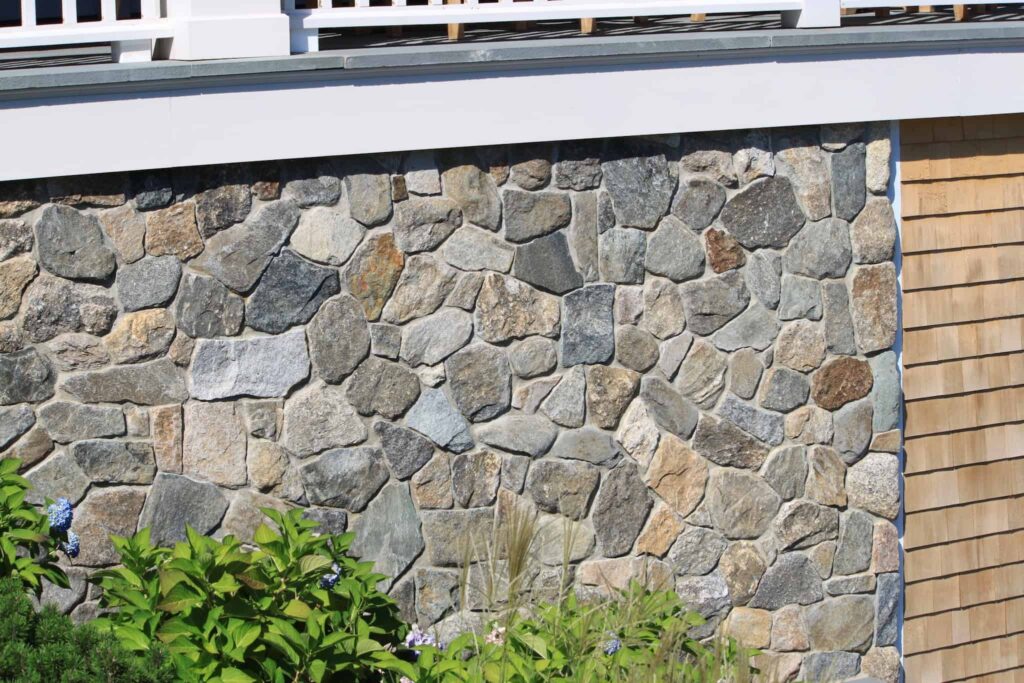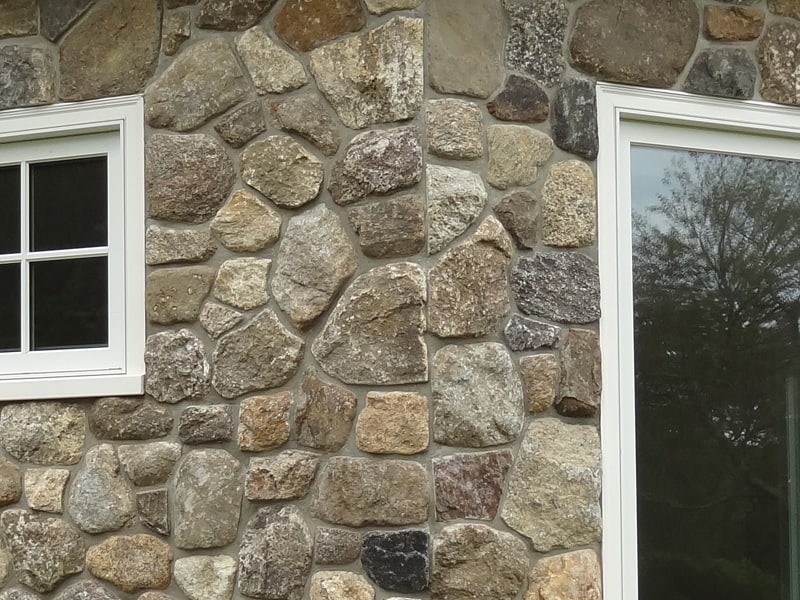Your cart is currently empty!
When it comes to installing thin stone veneer, one of the aspects that can make the biggest effect aesthetically is the last step in the process, jointing. There are many different ways to fit natural thin stones together, each providing a different look and feel. Below are a few of the different techniques used by various masons.
#1 | Dry-Laid, Recessed, or Paper Thin Mortar Joints
Mortar is recessed approximately 1/2 inch from the face of stone. Mortar can be raked out or installed without pointing. The dry-laid appearance can have nice “shadow lines.”
One way to install natural stone is to dry fit the pieces together and show no grout between the pieces. This installation technique will require the most trimming and material waste. Some shapes and colors may have a higher waste factor than others. This look is popular on interior applications and especially with the Ledgestone and Ashlar shaped products.
#2 | Standard Grout Joints – Concave
Typical interior joint thickness: 1/4″ – 3/8″ | Typical exterior joint size: 3/4″ – 1 1/2″
1/4 inch joint allows some leeway for a little less trimming, while maintaining a tight fit stone look. Typically the mortar is recessed approximately 1/4 inch from the stone face or it can be flush to face. It adds just enough to make it a little easier to accept irregularities in pieces of natural stone. It can also be a nice mix where it is not too modern, but not too rustic. This installation is most commonly used when installing the Mosaic and Square & Rectangular shapes. The amount of trimming/shaping required is moderate.
#3 | Face Over Grout / Wide Joints
Face over grout is when the mortar/grout goes over some of the stone. This can be decorative or brushed over. A wide joint is when the stones are spaced over 1″ apart and the mortar is predominant in the installation. Typically seen in historic stone installations. Round and mosaic are the most popular shapes for this installation. This installation technique requires the least amount of trimming and yields the lowest waste factor.
Tips and Suggestions
How to Calculate Your Waste Factor
Natural stone installation requires masonry techniques such as cutting, splitting, sorting, and trimming stones to fit the desired finished area. The amount of stone cut and/or trimmed during the installation process is referred to as the “waste factor”. The amount of waste per job is dependent on the project requirements including how tight the finished joints are desired to be. Tighter joints require more trimming which generates more waste. A higher waste factor requires more stone to be consumed.
For example, lets say you are looking to cover an area that is 100 ft x 10 ft (1,000 SF). Based on your mock up, you are expecting a 30% waste factor. This means that you will need to purchase 1,300 SF (1,000 SF + (1,000 SF x 30%) ) of material in order to cover the desired area.
